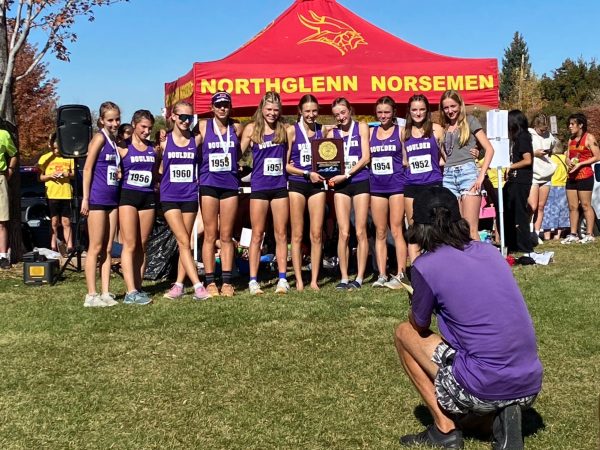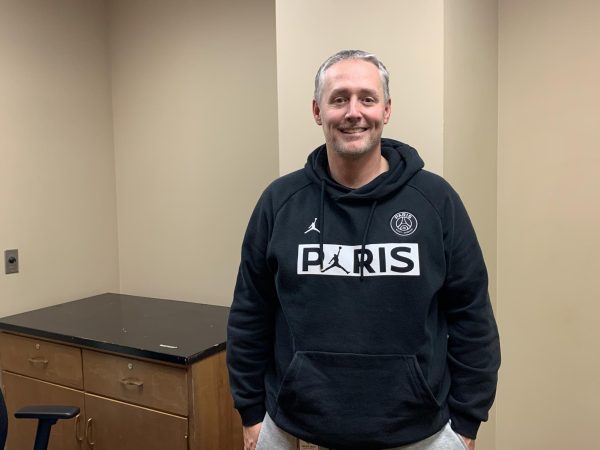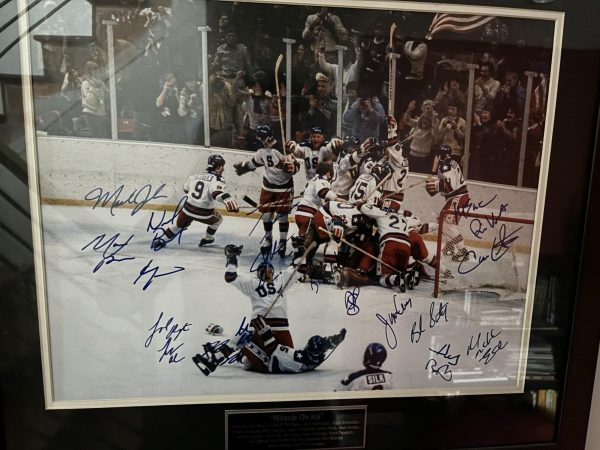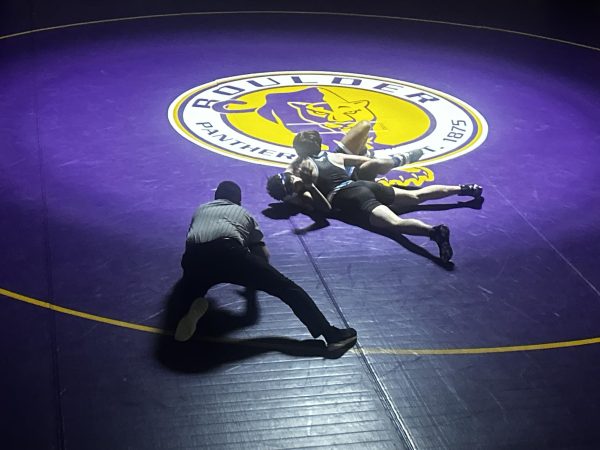The Ski Industry’s New Reality
Just like the rest of the world, the ski industry is having to adapt to COVID-19. The 2020-21 season is sure to look different from seasons past.
When school as we knew it came to an abrupt halt on March 12, so did the 2020 ski season. Robbed of spring skiing, thousands of winter enthusiasts turned their attention to the 2020-21 season. The uncertainty around what skiing in the midst of a pandemic would look like morphed into mania as snow began to fall around Colorado. Now, with temperatures dropping, COVID-19 cases rising and resorts’ opening days just a few weeks away, skiers and industry executives alike are anxious to get back on the slopes.
Ski resorts, the backbone of Colorado’s winter tourism industry, have long been the most popular and accessible type of skiing. From rentals to lessons to mid-mountain lodges offering every lunch food imaginable, resort skiing offers amenities and terrain for skiers of every level. It is also the form of skiing most impacted by COVID-19. Most Ikon and Epic Pass resorts require skiers to make reservations for the days they wish to ski to allow for optimal social distancing on the mountain. Reservations are released each Wednesday for the following week and pass holders can reserve seven “priority” days at a time, with booking available as far as five months in advance.
Resorts’ management has been forced to rethink their operations, from lift lines to parking lots. Eldora announced their new parking reservation system, while resorts such as Steamboat have opted to reduce crowds by limiting the sale of day tickets and implementing mask mandates. It seems that, at least for this season, the days of spontaneous skiing are a thing of the past, and we better hope our reservations line up with powder days.
With resort skiing operating on a limited scale, many are looking for other ways to get outside this winter. Backcountry skiing, which has been steadily gaining traction in recent years, is expected to explode in popularity this season. “We started cutting budgets back in April and May, thinking that [people wouldn’t be] making preseason orders and committing to inventory for this coming season,” said Bruce Edgerly, co-founder and Vice President of Marketing at Backcountry Access, a Boulder-based company that has led the industry in producing safety gear for backcountry skiing. They were wrong. BCA is on track for their biggest year ever as those deterred from resort skiing look to buy avalanche beacons, probes and other equipment necessary for backcountry expeditions.
Edgerly is convinced that the surge in popularity won’t be reversed once resorts resume normal operations. “I really don’t know of anybody who’s gone backcountry skiing and not liked it,” he said. “It’s a slippery slope. Once you start backcountry skiing, most people never turn back.”
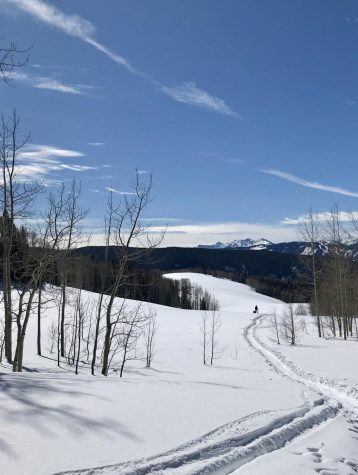
Backcountry skiing lends itself well to social distancing but also accidents when attempted by those who are inexperienced. As more people seek winter recreation in the wilderness, human-caused avalanches have increased dramatically. “I think there could be some issues,” Edgerly said, stressing that anyone who plans to be in the backcountry must take an avalanche education course and have the proper equipment. “But we have so much terrain [in Colorado] that it gets spread out a bit as long as you’re a little bit creative,” I asked him where his favorite spot to ski is, but he wouldn’t tell me. His only tip was to “avoid the Front Range, ’cause it’s too windy. I mostly ski in Summit County.”
A happy medium is found in resort-contained backcountry skiing, such as that offered by Bluebird Backcountry. Ski patrollers mitigate avalanche conditions, giving skiers less to worry about while still allowing them to experience the exhilaration of skinning up a mountain and enjoying fresh tracks all the way down without a lift in sight. “I think it’s a great idea,” said Edgerly. “Most people are heavily intimidated by the whole avalanche threat, [but] they feel more confident if someone else is paying more attention to that.”
Edgerly also has “an inkling” that backcountry resorts could see an influx of high-end clientele, who seek the catered-to experience they found at traditional resorts while still being in the wilderness. He mused about novice backcountry skiers sporting “nice Arc’teryx outfits, beautiful new Dynafit bindings on DPS $1,200 skis, hopefully, a nice float airbag and a tracker” (which are two of BCA’s specialty products.) He seems to be describing half of the people in Boulder, hinting that the backcountry no longer belongs solely to the experienced ski bums but to those who can buy their way in.
Edgerly maintains that Colorado’s abundant terrain will be difficult to exhaust. Still, it’s not hard to imagine this side of the industry—whose very essence is being in the primitive wilderness—being stretched thin. Hut trips, a natural extension of backcountry skiing, have found a new popularity in recent years, with huts being booked up months in advance. The 10th Mountain Division Hut Association, which manages ski-in/ski-out huts statewide, has had to implement new COVID-19 practices that close saunas, reduce capacities and limit hut occupancy to one group at a time instead of the usual slumber party, severely curtailing supply just as demand was skyrocketing.
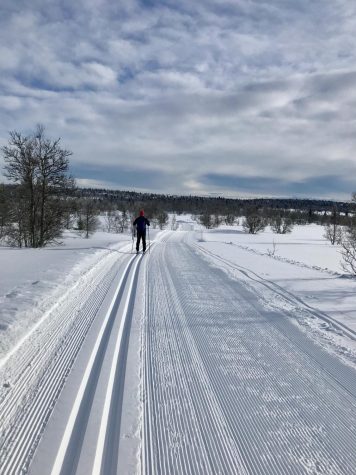
For those whose minds are boggled by avalanche training, light-weight rigs and multi-day hut trips, this may be the season to jump headfirst into nordic skiing (also called cross-country skiing.) Long-hailed as one of the most difficult sports on the planet, nordic skiing is often the afterthought of the ski industry. The majority of its top athletes come from Scandinavia, where the sport is an integral part of their culture. Jessie Diggins and Kikken Randall’s gold medal performance at the PyeongChang Olympics buoyed the US’s small but mighty community of “nordorks,” who share a unique enthusiasm for charging up corduroyed hills at full speed and careening through turns on two-inch-wide carbon skis.
At its most recreational, nordic skiing is a tromp through the woods. At its most elite, the sport pushes the limits of human physiology. No matter your place on the nordic skiing spectrum, “nordorks” nationwide are excited about the increased interest this unusual season is bringing to their naturally socially-distanced corner of the ski industry.

“[The pandemic] has really hit us,” said Sam Nelson, who works at Boulder Nordic Sport, one of the US’s leading retailers of nordic ski equipment. He noted that their early-season sales in October were on par with what they would typically see during the holidays. The majority of their business comes from novice nordic skiers, who are eager to escape lift lines and crowded lodges. BNS is beginning to sell out of men’s boots and entry-level skis in classic and skate techniques. Unlike other industries that continue production year-round, the ski industry completes its production cycle by early January. It turns its focus to developing next year’s products, leaving inventories to dwindle through the spring. This year, thanks to the spike in interest and a fire at the Fischer ski factory in Ukraine, Nelson predicts that some unhappy customers won’t be able to find the equipment they’re looking for come February.
Maybe you’ll brave the heavily-restricted resort scene this year, or maybe you’ll trade your season pass for an avalanche beacon and some climbing skins. Nordic skiing could be calling your name, or perhaps you’re still hoping that you’ll wake up tomorrow and find the ski industry—and the world—just as it was last February. This season is an unknown quantity for everyone, but some great ski days are surely in store for everyone with all the options out there.

Elliote Muir is a senior and is very excited to join The Owl for her last year at Boulder High. Having loved creative writing since she was little, and as an avid skimmer of The New York Times, Elliote is thrilled to get the chance to learn more about journalism this year! When Elliote isn’t in school, you can find her captaining Boulder High’s mountain bike team, skiing, waiting for the next season of The Great British Bake Off to premiere, playing with her dog, and adventuring in the wilderness with friends and family. As a self-proclaimed foodie, Elliote loves cooking and baking (but mostly baking) and trying new foods. Her favorite food—okay, her favorite meal—is her dad’s homemade...



